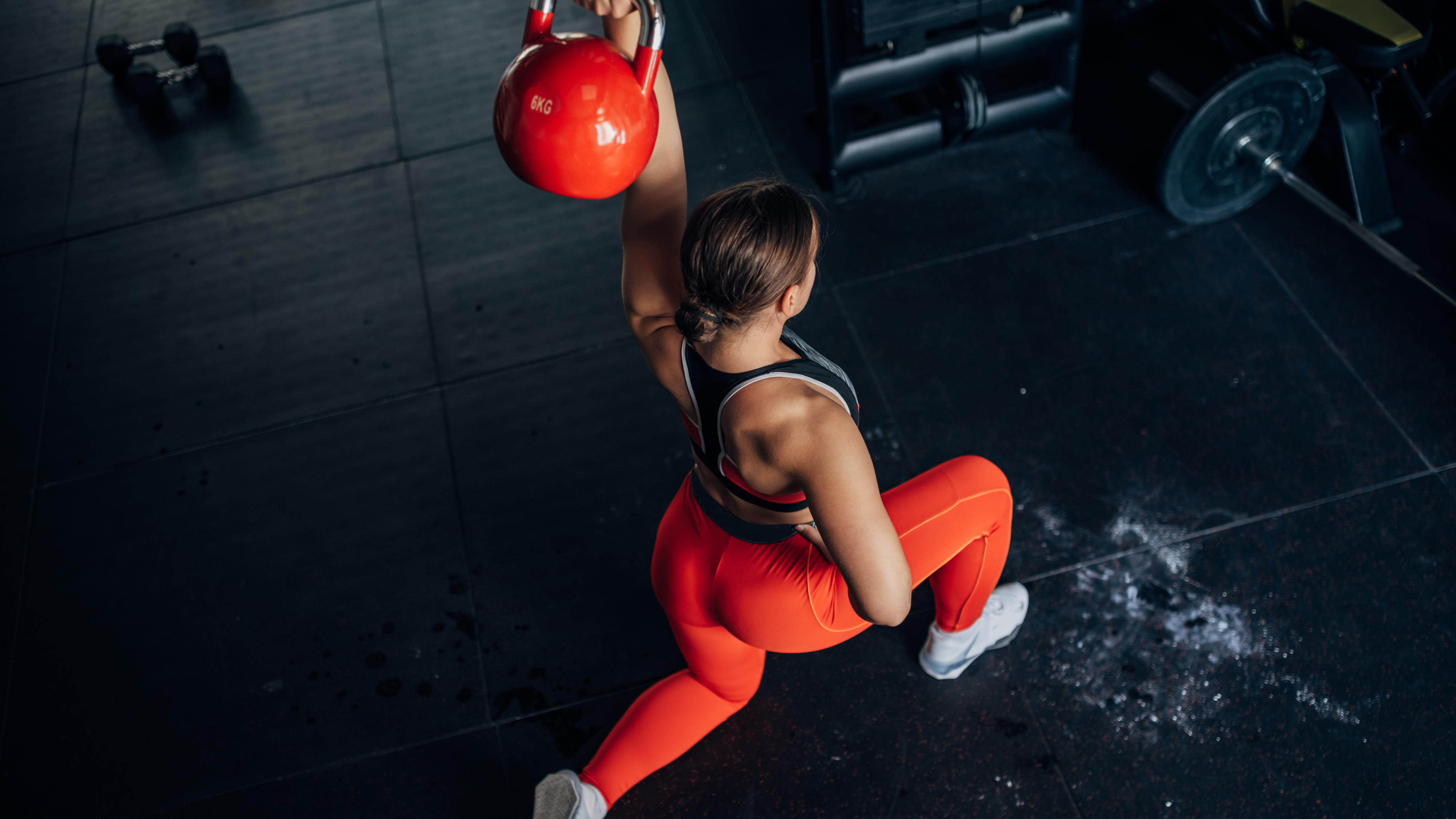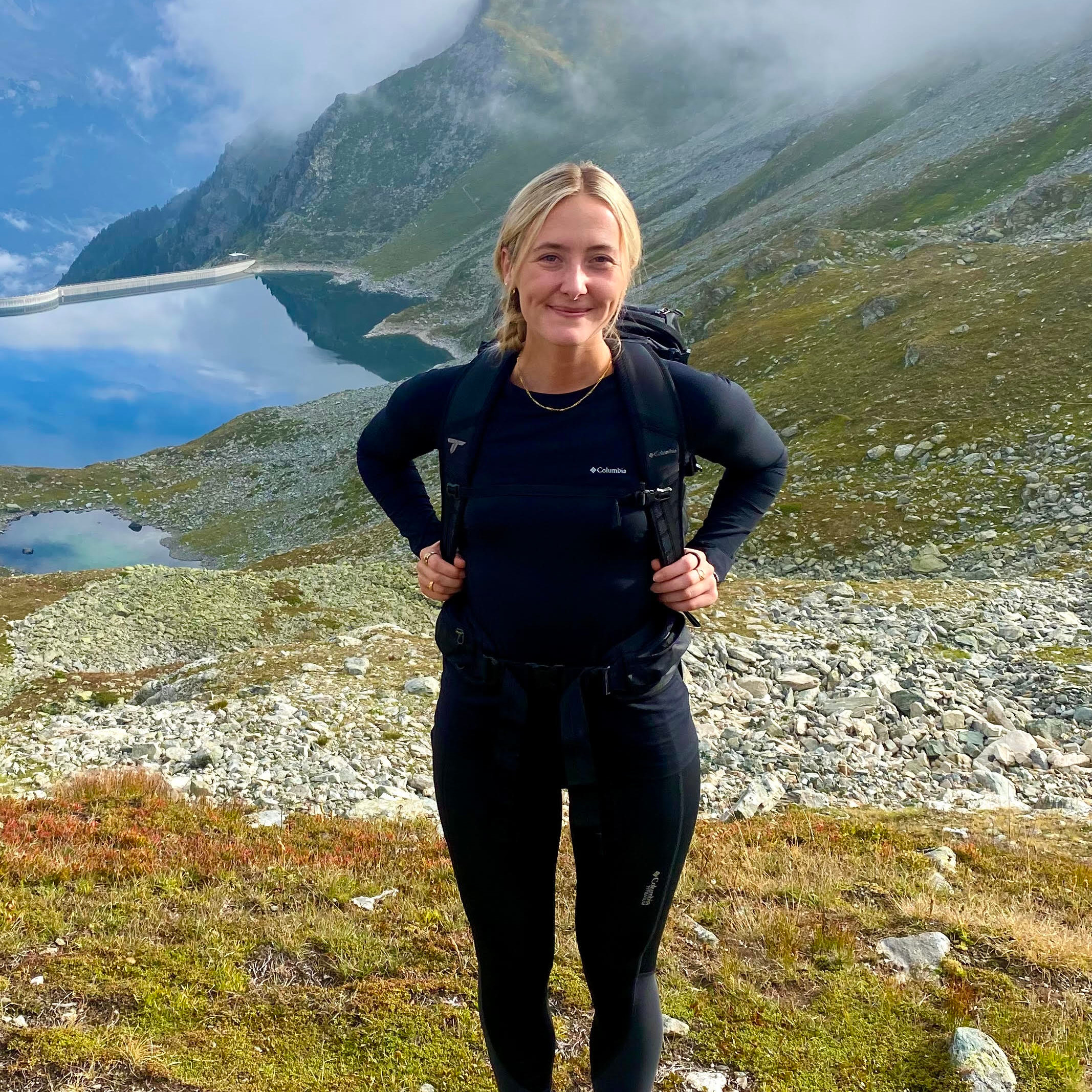I did 30 half kneeling kettlebell presses every day for a week — here's what happened
Save this for your next shoulder workout

The overhead press is a mighty upper body exercise. Known to give your shoulders a gnarly workout, it's also a great move for engaging the core while you stabilize the weight over your head.
With my trusty kettlebell by my side, I decided to experiment with the kneeling version of this exercise and spent a week completing 30 half kneeling kettlebell presses everyday (15 on each side of my body).
This version of the overhead press removes the legs from the movement, placing you in a slightly unsteady position, and demanding a strong and engaged core to stabilize the body. It also requires a good level of balance, or else you and your kettlebell could take a tumble.
I train with an adjustable kettlebell, which features in our best kettlebell roundup, because I like to start off light as I perfect my form and then move up weight when I feel more confident with an exercise. But don't worry if you don't own a kettlebell at home, the majority of gyms provide a selection of kettlebell weights in the free weight section.
Quick note, no matter what size of weight you are working with, we recommend learning how to hold a kettlebell properly to save any unwanted injuries from occurring.
How to do a half kneeling kettlebell press
- Start by placing one of the best yoga mats or a cushion on the floor to protect your knee.
- Begin in a half kneeling position, with one knee on the ground and the other foot positioned flat on the floor in front, creating a 90-degree angle at the knee.
- The knee of the grounded leg should be directly under the hip, and the foot of the front leg should be in line with the knee. Ensure your torso is upright, and your core is engaged.
- Position the kettlebell next to the knee of the leg that is on the same side. Grip the kettlebell handle with the hand on the side of the knee that is on the ground. The palm should be facing inward, and the kettlebell should rest on the back of the forearm.
- Initiate the movement by pressing the kettlebell upward. Keep the wrist straight and the forearm vertical as you lift. Engage your core and maintain a stable base through the kneeling position.
- Extend your arm fully, reaching overhead without allowing your lower back to arch excessively. Ensure that your bicep is close to your ear at the top of the movement. Keep your shoulders down and away from your ears.
- Now lower the kettlebell back down with control, returning to the starting position. Avoid allowing the kettlebell to drop quickly or losing tension in your muscles.
I did 30 half kneeling kettlebell presses every day for a week — here's what happened
It really isolated my shoulder muscles
Some of you may read this and think, duhh, that's what an overhead press is supposed to do. But one thing I really noticed that the half kneeling position emphasized shoulder stability. Have you ever looked at yourself in the mirror while performing an overhead press and noticed how shaky and sometimes out of control the rest of your body is as you try to lift the weight above your head?
First, consider lowering the weight range you are using. It's easy to let ego take over when we are picking weights in the gym, but this can actually stunt your progress if you aren't able to perform an exercise with controlled and correct form.
Now going back to the half kneeling version of this exercise, I found that the kneeling position enhanced my shoulder stability by eliminating the potential for using body momentum. This forces the shoulder muscles to work more independently, promoting better stability and control in the shoulder joint. The burn was real by day three, trust me!
Sign up to get the BEST of Tom's Guide direct to your inbox.
Get instant access to breaking news, the hottest reviews, great deals and helpful tips.
I felt it across more than one muscle in my upper body
As I practiced the half kneeling kettlebell press everyday and really tuned into where I could feel it working, I noticed that it wasn't just my shoulders getting a good seeing to.
I could feel it in my deltoids, triceps and in my traps (upper back). I'd love to have a more sculpted upper body and see more muscle definition there and this kneeling press will definitely be featuring in my upper body gym sessions in future. Aside from the visual impact that kneeling kettlebell presses can have, I also noticed how this exercise is great for improving functional strength in the upper body. I have moved house too many times and lifted too many heavy items in and out of vans to know how handy a strong upper body can be.
It reminded me how important core strength is
You can have the biggest back and biceps in the gym or the peachiest glutes yet have no real core strength. Core strength is essential no matter what strength exercise you are performing. The core muscles, including the rectus abdominis, obliques, transverse abdominis, and erector spinae, provide stability to the spine and pelvis. A strong core helps maintain proper posture and alignment during exercises, reducing the risk of injury, helping to enhance form and overall performance.
I felt like my core was whispering to me during the move reminding me to engage it throughout the exercise. The core enables us to maintain equilibrium during various exercises, especially those that involve dynamic or unilateral movements, like the half kneeling kettlebell press.
Thanks to our list of the best ab exercises, I have plenty of exercises to pick up while I work on strengthening my core.
More from Tom's Guide

Jessica has been a fitness writer at Tom’s Guide since 2023, bringing three years of experience writing about health, fitness, and the great outdoors. Her passion for exercise began during her childhood, where she spent weekends hiking and competing in local athletics club events. After earning a master’s degree in journalism from Cardiff University, Jessica found the perfect way to combine her love of storytelling and fitness into a career.
Jessica is passionate about testing fitness gear and tech, using her reviews to help readers make informed buying decisions. She ran her first marathon in April 2024, finishing it in 3 hours and 48 minutes. Through her training, she’s developed a deep understanding of what it takes to grow as a runner, from effective workouts and recovery techniques to selecting the right gear for every challenge.
When she’s not at her desk, Jessica enjoys spending time in the kitchen crafting new recipes, braving cold water swims and hiking.
